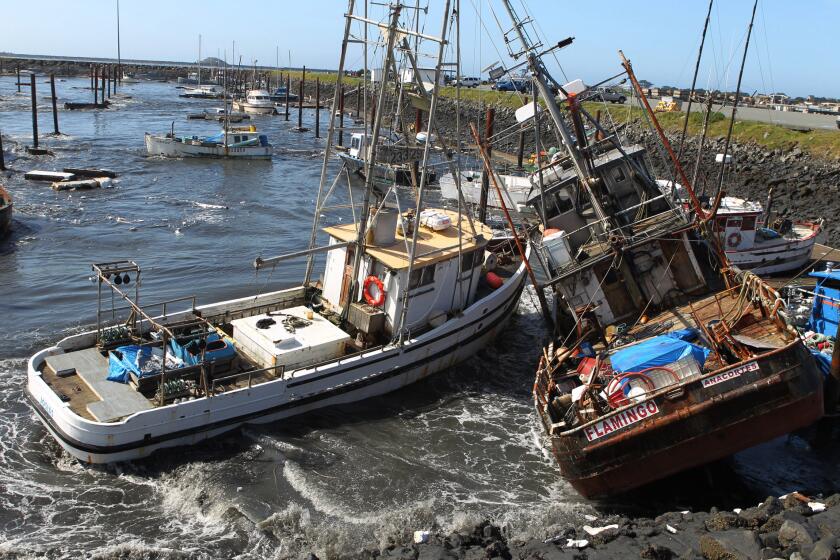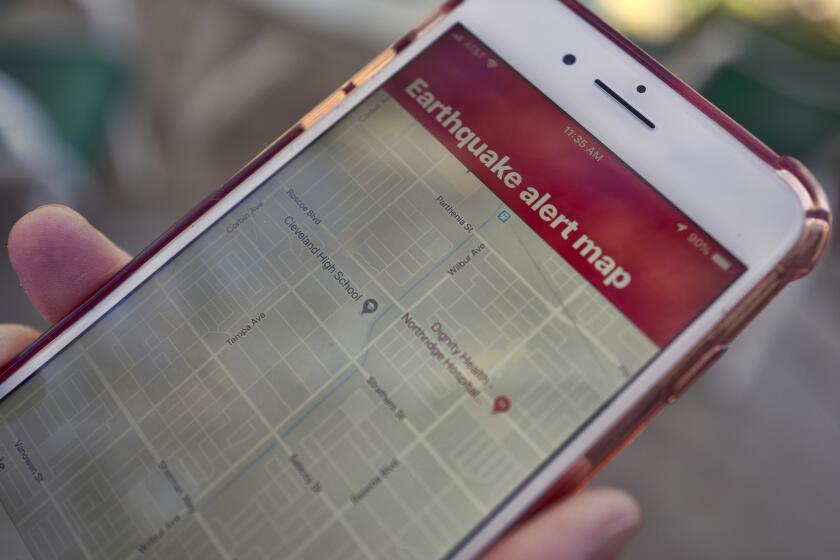MAKING A DIFFERENCE : One Region’s Approach: Help Ease Children’s Emotional Aftershocks
- Share via
After disasters like the Loma Prieta and Landers earthquakes, Hurricane Andrew and the Midwest floods, schools reported increases in student absences, fights, drug and alcohol abuse cases and even suicide attempts. For the next six months at least, mental health experts say, children and adolescents throughout Southern California will need help coping with fears and anxieties generated by the Northridge earthquake. A regional corps of professionals and organizations are available to provide parents, baby-sitters, child-care providers and relatives with basic information, referrals and intervention for children to get the emotional support they need--regardless of income restrictions, language needs or location. In some cases, a phone discussion with a family doctor or pediatrician, school psychologist or counselor or local mental health professional may be enough to address questions. In other instances, children may be better served by an office visit with a mental-health professional for assessment or counseling.
COMMON REACTIONS TO DISASTER
Symptoms like sleep and appetite disturbances or memory and concentration lapses are normal responses to traumatic events. Other typical reactions vary, depending upon the age of the child or adolescent.
Preschool through second grade
Helplessness and passivity
General fearfulness and fantasizing danger
Attributing magical qualities to the event
Anxious attachment to people, places or things
Regressive behavior like thumb sucking, clinging to parent or bed wetting
Third through fifth grade
Fears triggered by reminders of event
Retelling and replaying the event
Safety concerns
Inconsistent behavior
Hesitation to interrupt or disturb parents
Shame or guilt over actions or inaction during and after the event
Sixth grade and up
Detachment
Shame or guilt over actions or inaction during and after the event
Self-consciousness about fears
Drug or alcohol consumption, sexual promiscuity or other self-destructive behavior
Radical changes in life attitudes
Shifts in relationships with friends, family
Sources: “Teacher to Teacher: Coping with the Earthquake” produced by KCET-TV’s Educational Enterprise Department; San Fernando Valley Child Guidance Clinic
24-HOUR HELP AND REFERRAL
The following agencies are prepared to answer questions or provide referrals around the clock, seven days a week for services to children and adolescents regardless of caller’s location, income or language needs.
L.A. County Department of Mental Health (800) 854-7771
Valley Hospital Medical Center (800) 345-2747
Interface Crisis Line-Ventura County (800) 339-9597
OTHER RESOURCES
“Coping With Children’s Reactions to Disasters” is available at no cost from San Fernando Valley Child Guidance Clinic, (818) 993-9311.
“Helping Children After a Disaster” is available at no cost from Red Cross Shelters and at disaster aid application sites.
“What to Expect and How to Help After the Earthquake” is available at no cost from Valley Hospital Medical Center, (800) 345-2747.
ONE EXPERT’S ADVICE
Dr. STEPHEN J. HOWARD
Psychologist and co-author of “Coping with Children’s Reactions to Disasters,” which was written after the Sylmar earthquake and revised after Los Angeles’ civil disturbances in 1992
Adults have to recognize that earthquakes, unlike other disasters, leave children more anxious for a longer period of time. Once most disasters end, they end. With aftershocks, children may be afraid for a long time.
I would say most children will return to normal functioning within several weeks. It is my suspicion--as well as my colleagues--that in cases where children don’t return to normal functioning the problems usually existed before the quake. The problems perhaps may not have been on the surface, and the quake may have triggered problems that need attention to come to the surface.
Children react differently, depending upon their temperament and experience--some may withdraw, others may become more aggressive. An adult’s impatience doesn’t help at all. Don’t tell a child, “I don’t want to hear about it anymore.” This will make the situation much worse. A parent’s poor attitude toward children’s continued anxiety may be such that the children may feel that there’s something wrong with them.
It’s important for children to know what an earthquake is, how it occurs, what aftershocks are. You have to know what the child’s ideas of an earthquake are, how much of it is fantasy, how much of it is real. Also, involve the children in helping you, in bringing back normalcy--sweeping, shopping--it helps to re-establish a sense of control.
Children, especially young children, will associate the earthquake to their senses. They will be more sensitive to darkness, traffic, planes flying overhead, thunder. If a child is afraid to sleep in his or her own bed, perhaps rearranging the furniture to make it seem like a different room than it was during the earthquake may help. Parents and adults have to be a little inventive to listen to what it is the children are afraid of and change things as they are able.
I was talking to a class of junior high students, and they asked, “When is the Big One coming?” And I said, “In the Sylmar quake, 59 people died. But during that year, 25,000 people died in car accidents. So I don’t want you ever to go into a car and drive.” They laughed, and I said, “Dangers exist. We have to live with them and we have to protect ourselves. We have to drive carefully, cross the street carefully, and we have to prepare for earthquakes as well.”
It helps children to know where the earthquake kit is, where their shoes, flashlight and portable radio are, what their parents will do if the children are in school if there is an earthquake. There should be this reassurance and planning at home just as children go through these exercises at school. You have to prepare. That’s the best we can do. We live in California. Other states have hurricanes, tornadoes or floods. We can’t stop living.
More to Read
Sign up for Essential California
The most important California stories and recommendations in your inbox every morning.
You may occasionally receive promotional content from the Los Angeles Times.










